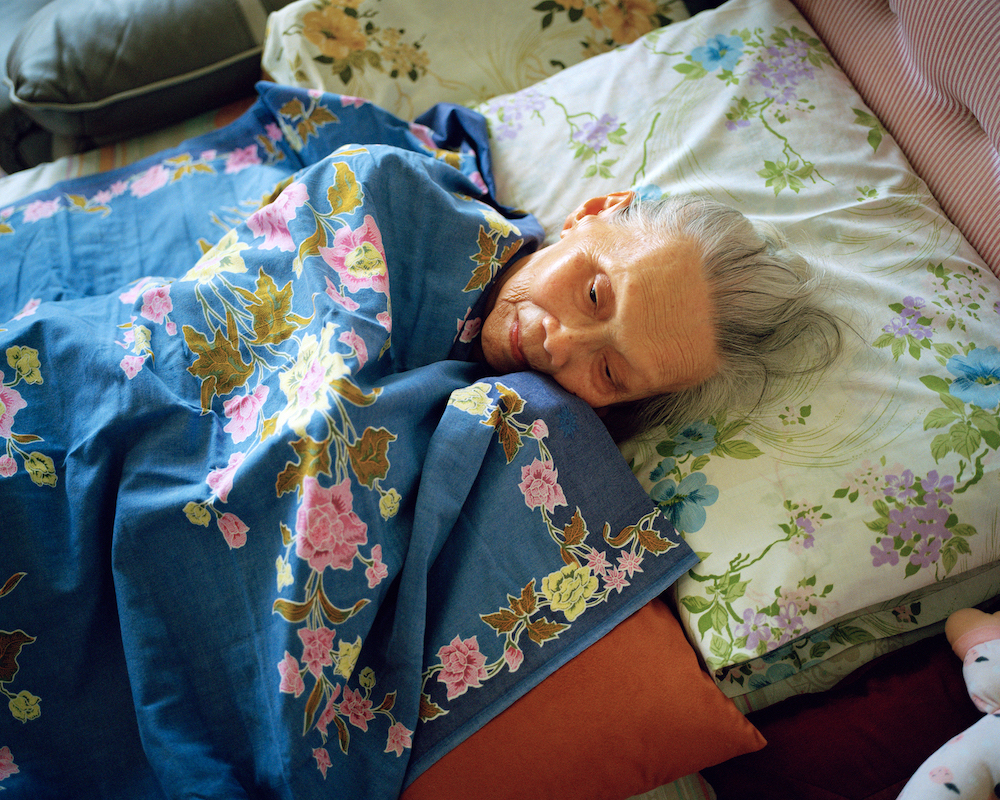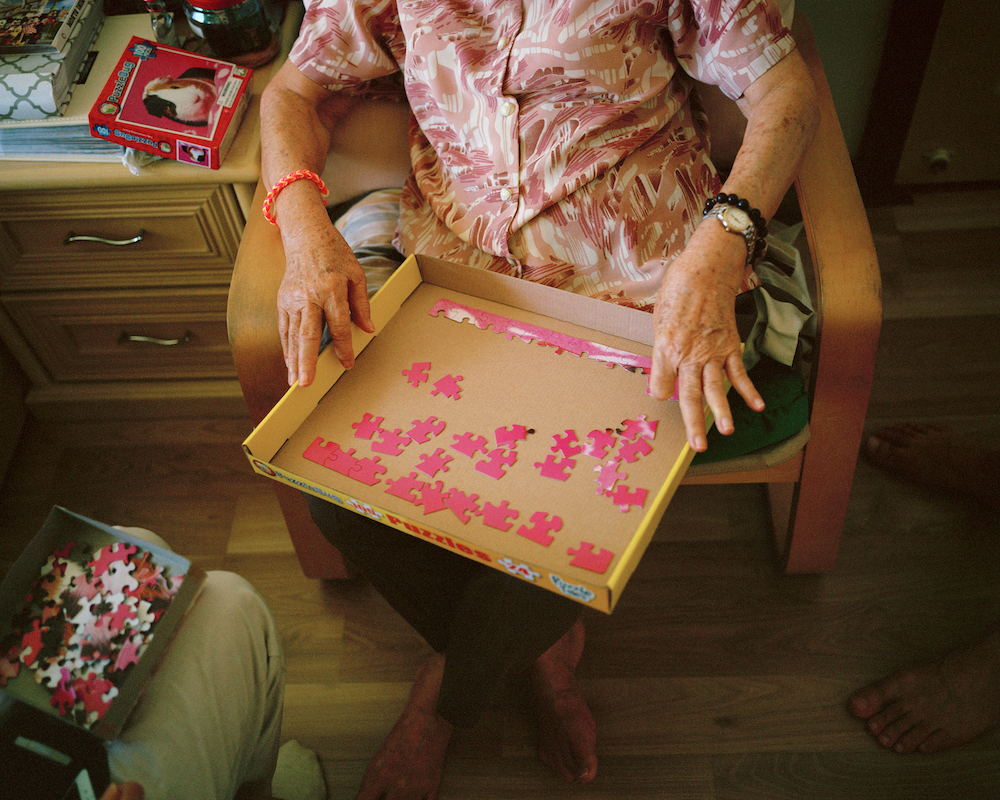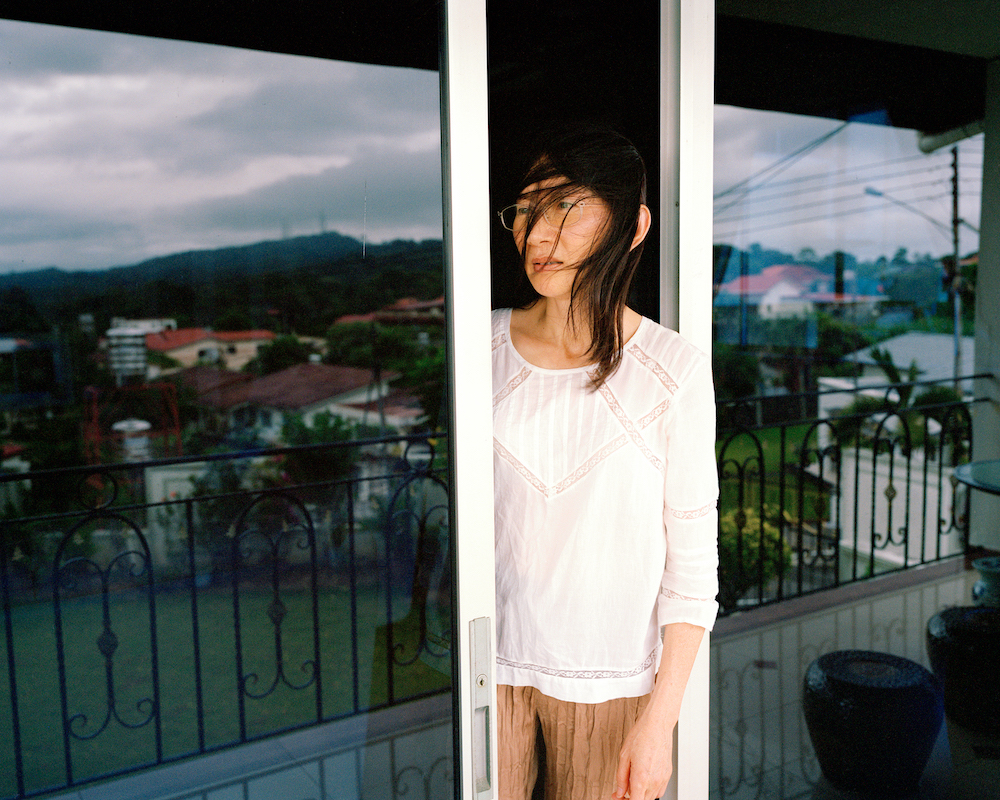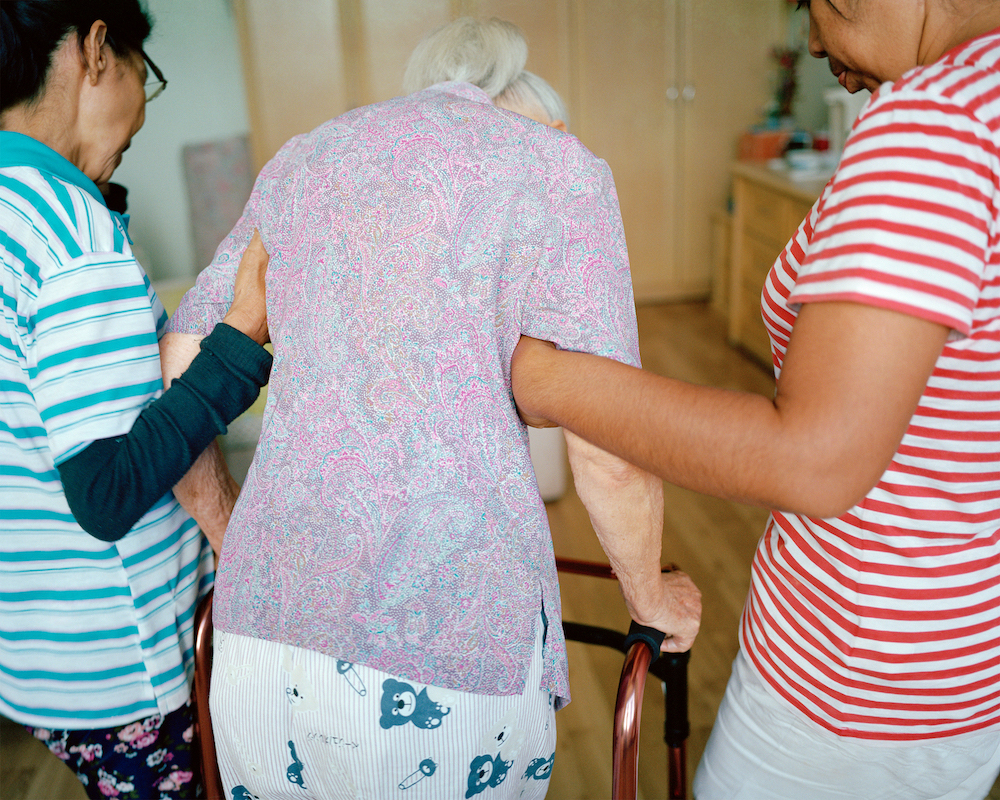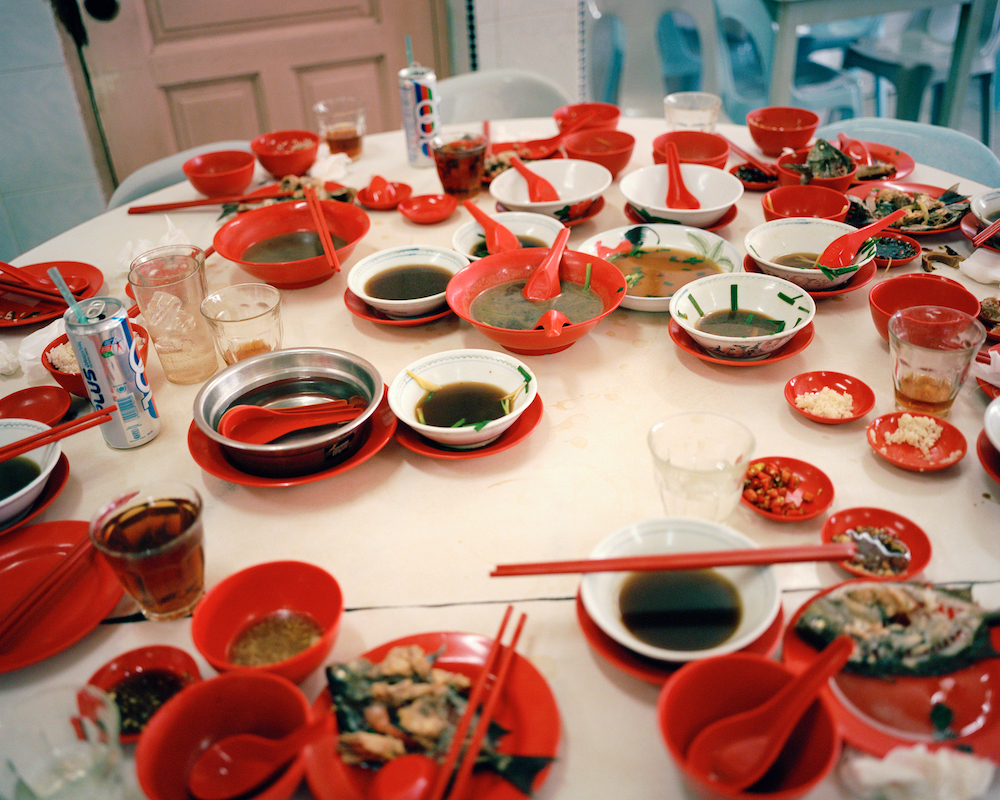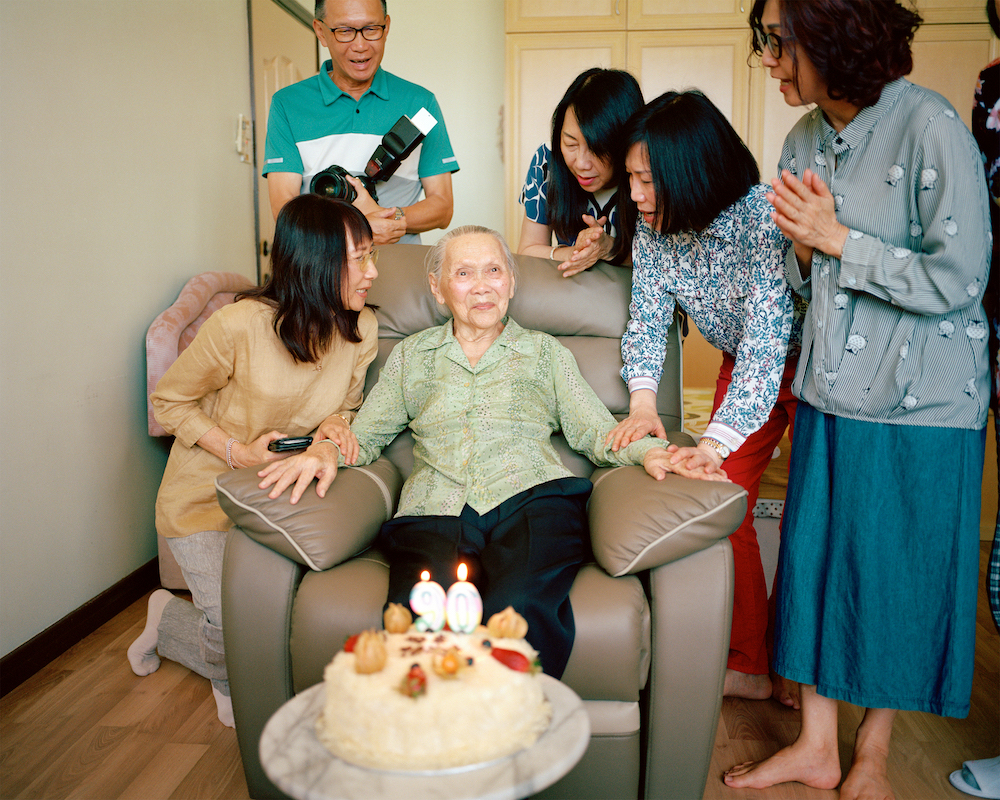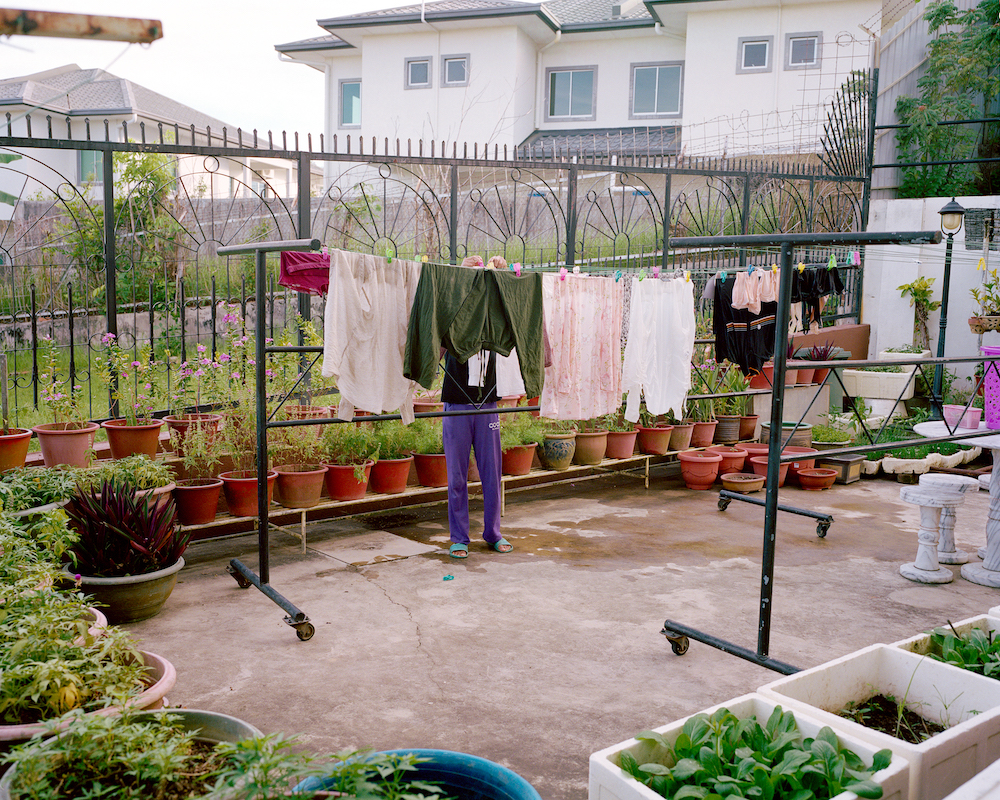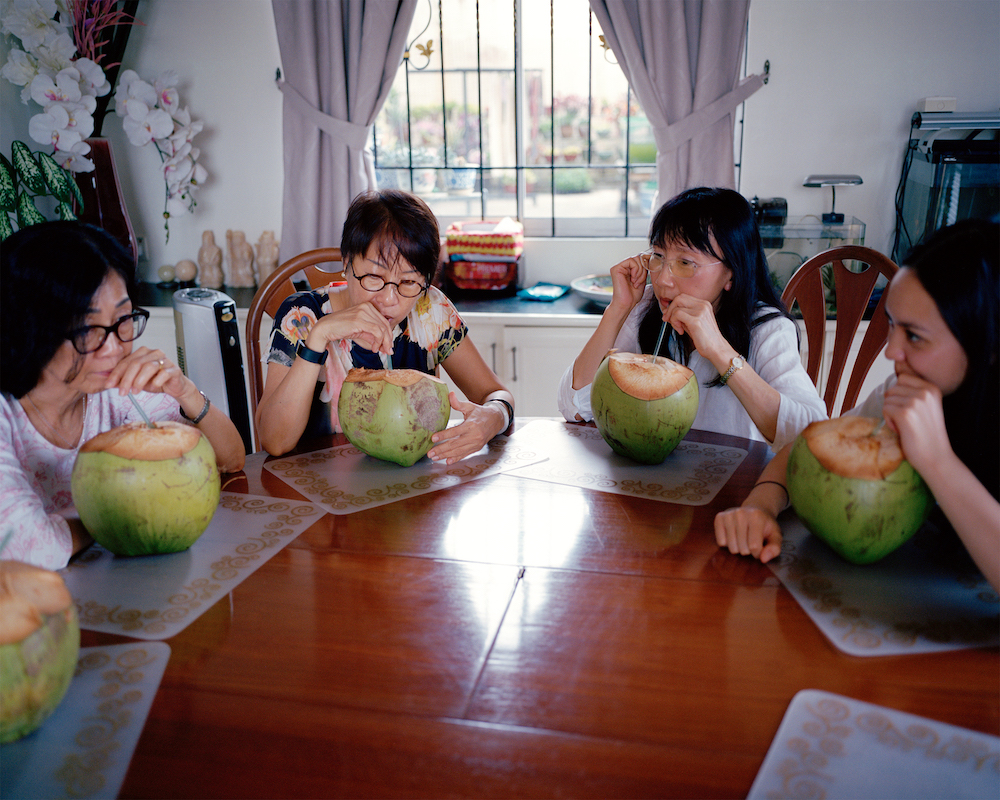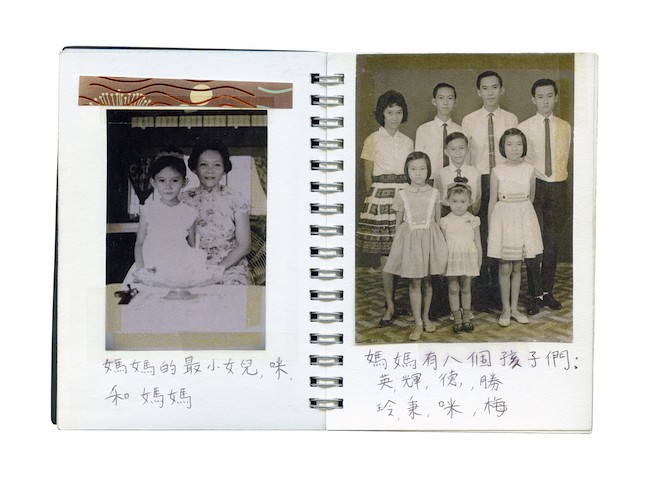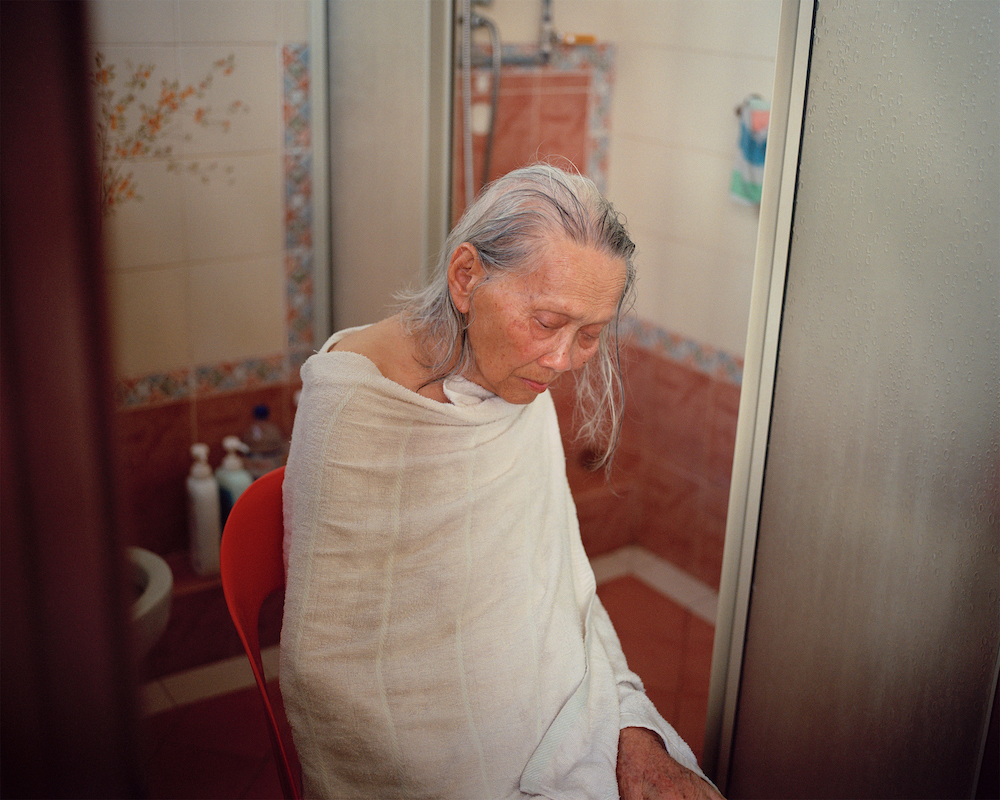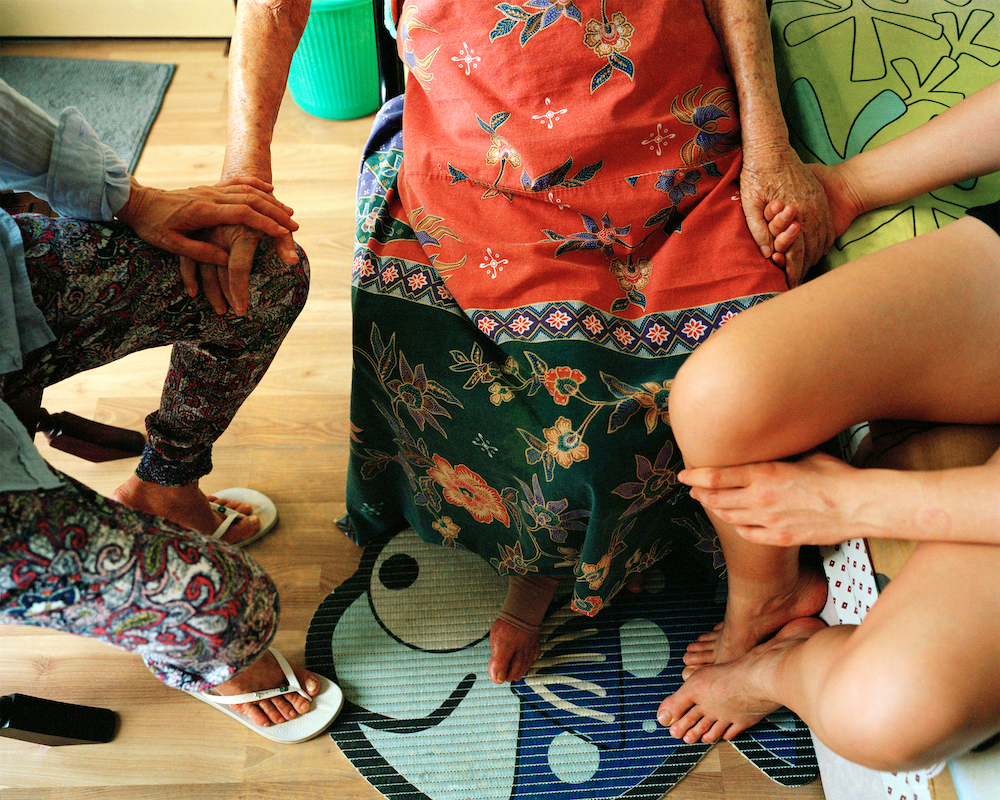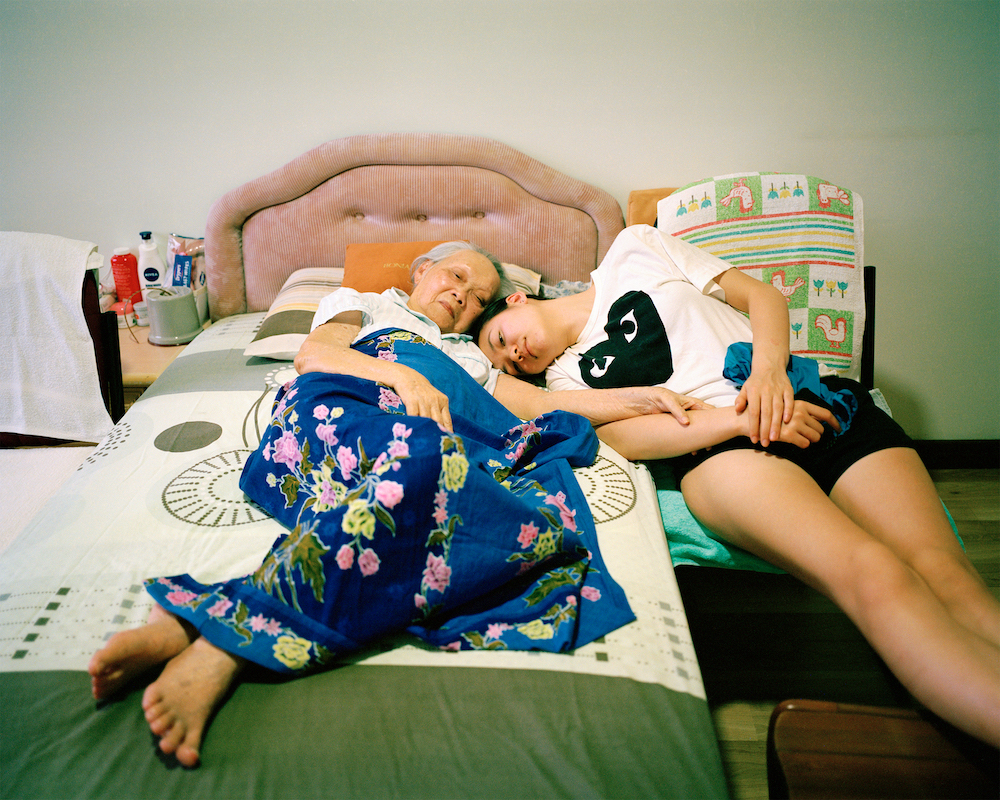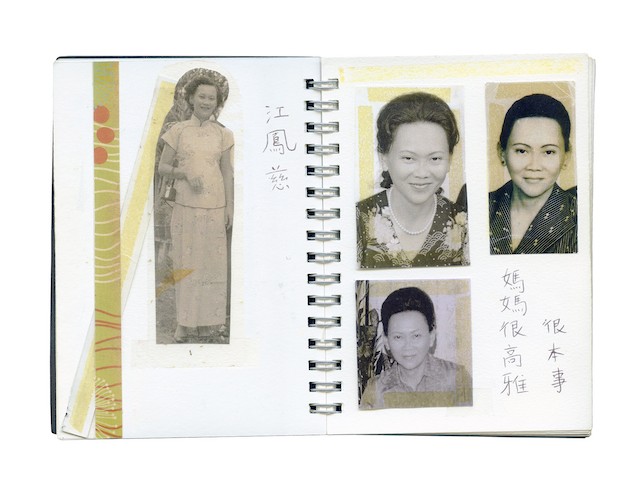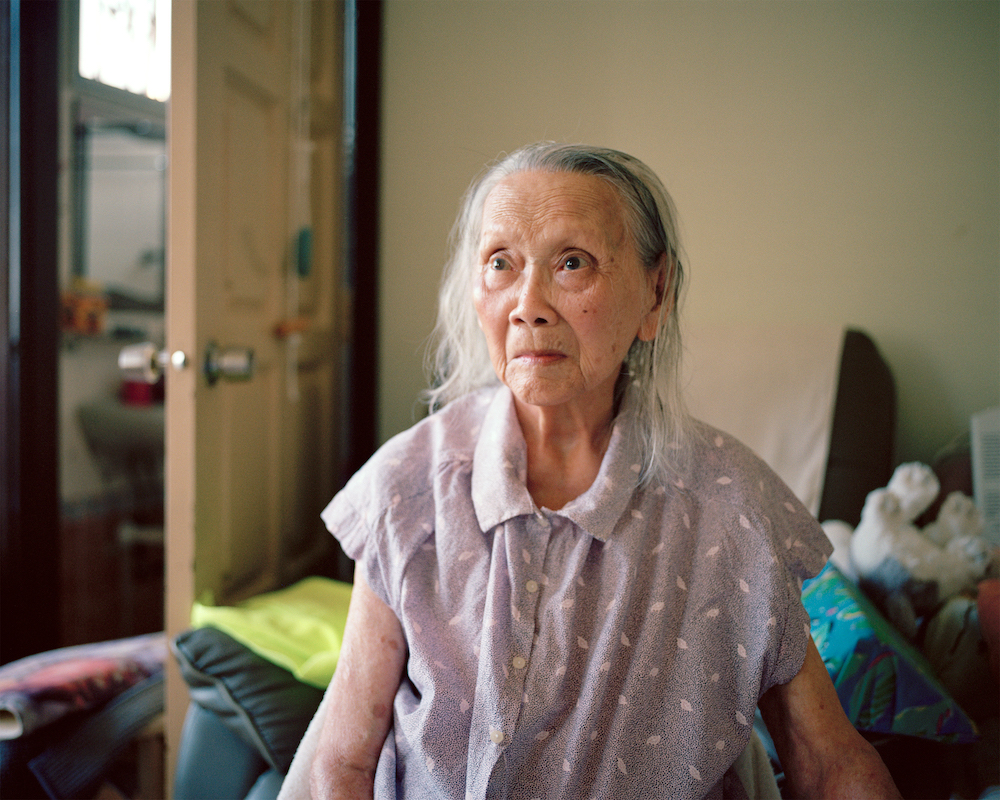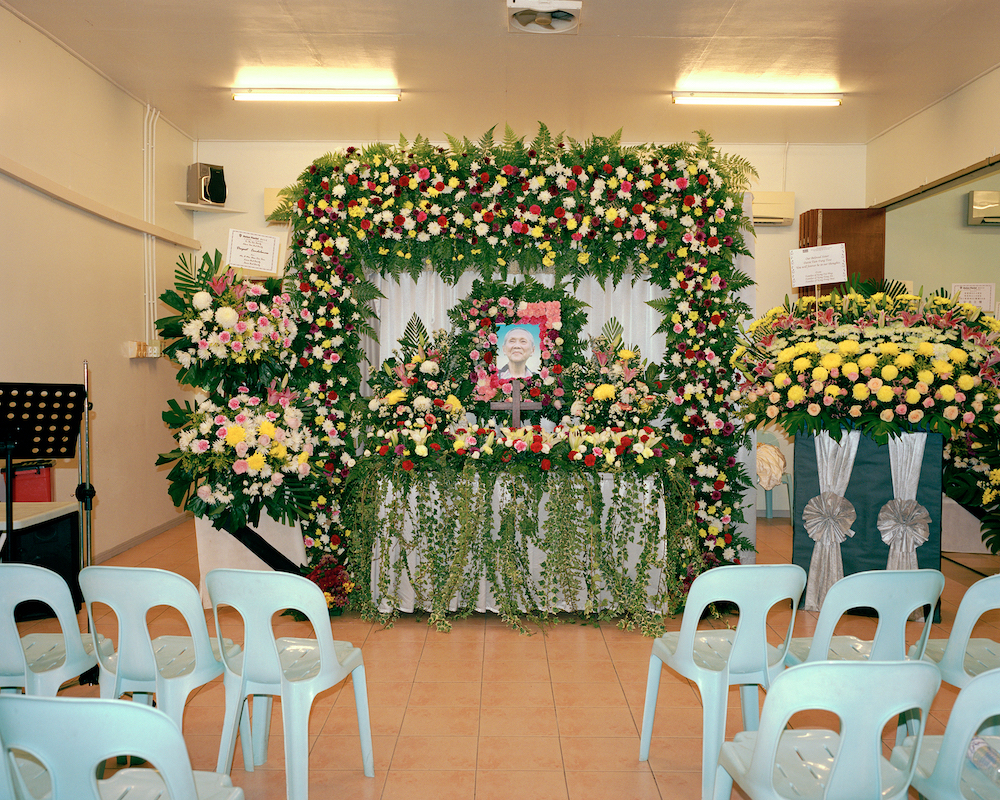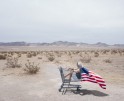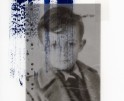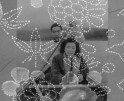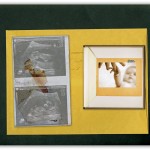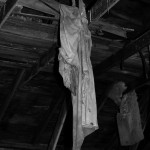Memory/Loss Series: Anne Moffat: Forget Me Not
Welcome to the first feature of our Memory/Loss series, showcasing photographers who explore themes related to family, grief, aging, and caregiving. Many of the artists grapple with Alzheimer’s disease, in particular, using their cameras to tell intimately personal stories of their loved ones as their memories fade. The CDC estimates that in the United States alone, 5.8 million people will be affected with Alzheimer’s and other related dementias. That’s about 1 in 9 people, making it a tragically common experience for so many families. Moreover, because the disease is genetic and there is no known cure, many wonder if their genes hold the same fate. This collective of photographers from across the globe shed light on the reality of this terrible disease and the memories and loss associated with memory loss.
This series is organized by Hannah Latham in collaboration with Aline Smithson. Latham completed her thesis, Bring Me A Dream, at Rhode Island School of Design, which focuses on the tragic decline of her paternal grandparents. Inspired by her grandmother’s experience with Alzheimer’s, Memory/Loss features a series of photographers exploring similar themes.
Visit the Alzheimer’s Association’s resources to learn more about the causes, treatments, and how to help.
I immediately felt at home when I first discovered Anne Moffat’s work. I know this story. Her calming color palette and quiet moments that speak volumes about the group effort it takes to care for someone with dementia are profound. Several of her photographs focus on the hands, whether holding up her grandmother or the pieces to a puzzle, alluding to the tactile experience of caregiving. The “life story” notebooks her mother made for her grandmother to revisit memories depict family photographs paired with hand-written stories. Curated alongside Moffat’s portraits, the notebooks remind me of how we try to cope with the reality of Alzheimer’s while attempting to trigger memories in their mind.
Anne Moffat is a photographer working across an array of editorial, commercial and personal projects based in Naarm/Melbourne, Australia on unceded Wurundjeri land. Anne draws on familial ties to Malaysia, China, and New Zealand, as well as family migration to Australia, to inform her social documentation and portraiture.
Anne’s work has been awarded Jury’s Choice in the Prix Virginia (2021), as well as shortlisted in the British Journal of Photography’s Portrait of Humanity (2020), the Singapore International Photography Festival Portfolio Open Call (2020), and the William and Winifred Bowness Photography Prize (2019).
Anne Moffat has most recently exhibited at the Centre for Contemporary Photography (2021) and Horsham Regional Art Gallery (2021). Her images have shown around Australia, internationally, and even in space (as part of a world first major exhibition over 111,000 feet into the stratosphere); and featured online in publications including the British Journal of Photography, It’s Nice That, Booooooom, Sky Italia, and PH Museum.
Freelance clients include Airbnb, Away Travel, Commonwealth Bank of Australia, Emirates, Financial Times, Google, Liquorland Australia, M&C Saatchi, Nike, Simons Foundation, Singapore Airlines, Vox Media, Wise, Abbotsford Convent, Australian Centre for the Moving Image, City of Melbourne, Circus Oz, Melbourne International Film Festival, Next Wave, and RISING Melbourne among others.
Anne complements her practice with a Bachelor of Science and Diploma of Languages from The University of Melbourne, and is a member of Women Photograph, Diversify Photo and Authority Collective.
Follow Anne Moffat on Instagram: @annemoff
Forget Me Not
My grandmother was a dragon. A token of authority, dignity, honour and success, those born into the year of the dragon are considered highly lucky. At 90 years of age she was mother to eight, grandmother to eighteen, great-grandmother to ten and counting—and a sufferer of late-stage Alzheimer’s Disease.
Forget Me Not (2014-2019) portrays my experience over multiple trips to visit my maternal grandmother, Kong Fung Tsze, in Sandakan, Malaysia—a process of trying to understand more of who I am and who she is, while watching her lose her independence and sense of self.
When my grandmother first started forgetting, my mother crafted her a number of small “life story” notebooks lovingly filled with images and handwritten memories of their lives together. These pages are memorialised and work in dialogue with my own images, providing context to my grandmother’s once full and vibrant life.
Although it’s impossible to fully comprehend what people suffering from Alzheimer’s Disease experience, this is my visual interpretation of the disorientating, challenging and repetitive nature of the condition, and the feelings that arise from watching the slow decline of a life of someone you cherish.
In loving memory of my grandmother Kong Fung Tsze (1928-2019).
Tell me about your coming of age and what brought you to photography.
My first camera was a small digital point and shoot that lived in my pocket throughout high school to snap pictures with friends and family. I’ve been hooked ever since.
What does your photographic practice look like, and what brought you to this subject matter?
I think documenting moments with friends and family is still largely a theme that drives my personal practice to this day (although I’ve graduated to some larger cameras). Photography gives me a platform to delve into the lives of others, and explore my relationships with them, and in turn my relationship with myself.
What have you learned throughout creating this body of work?
Photographs become more precious with age.
Who are your biggest influences / what inspires you to create?
Daniel Arnold, Sian Davey, Andre Wagner, Xiaoxiao Xu, Elliot Ross, Hoda Afshar, Min Hyun-woo, too many others to name
What is next?
I’m currently in the process of creating another body of work, this time in Australia, for exhibition later this year. More info to come on my Instagram soon!
Posts on Lenscratch may not be reproduced without the permission of the Lenscratch staff and the photographer.
Recommended
-
Martin Stranka: All My StrangersDecember 14th, 2025
-
Interview with Maja Daniels: Gertrud, Natural Phenomena, and Alternative TimelinesNovember 16th, 2025
-
MG Vander Elst: SilencesOctober 21st, 2025
-
Photography Educator: Josh BirnbaumOctober 10th, 2025
-
Aiko Wakao Austin: What we inheritOctober 9th, 2025

